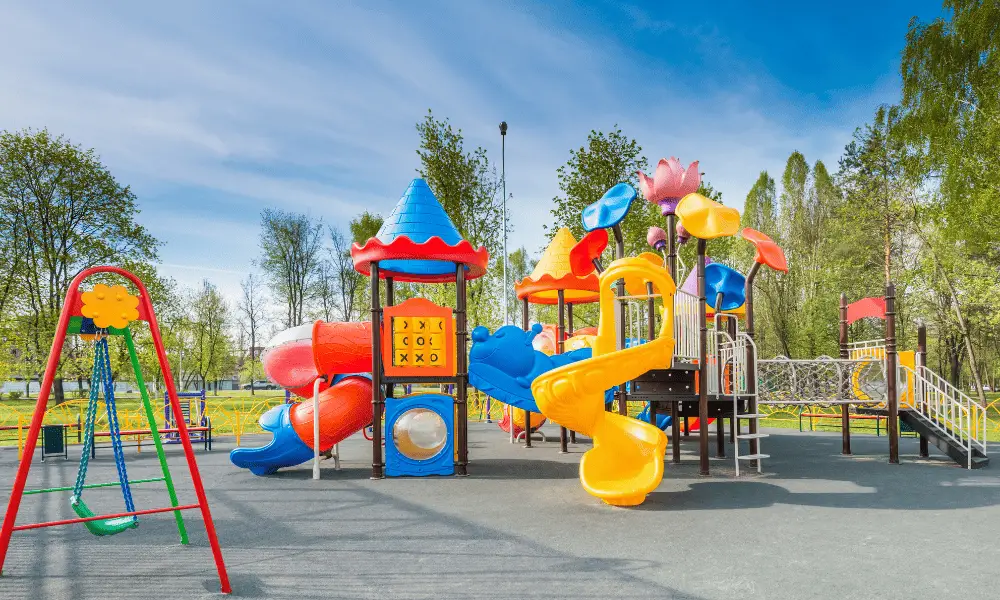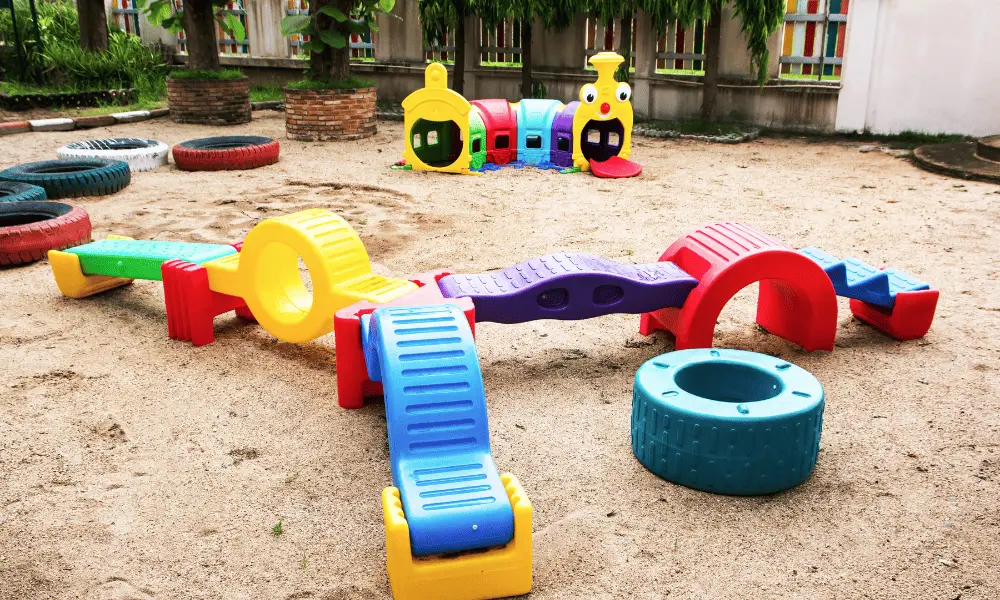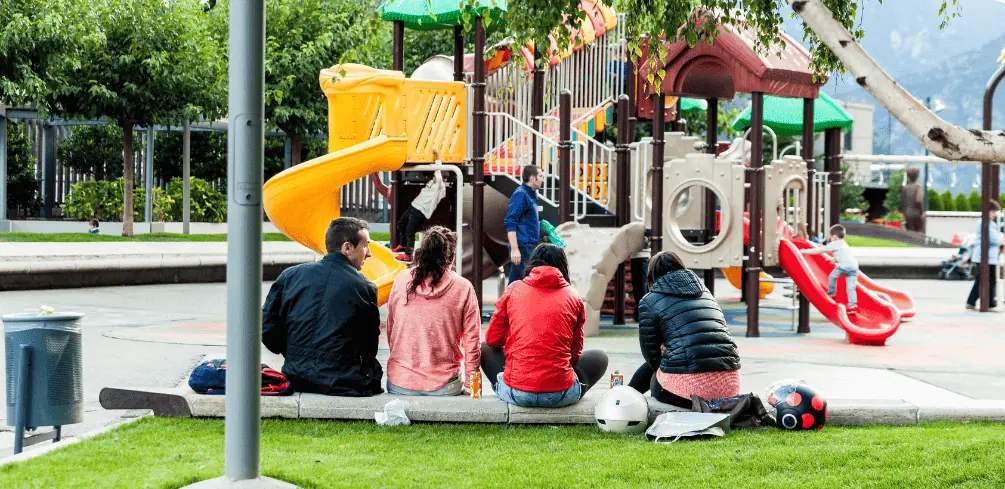Imagine a world where all children, regardless of their abilities, can play together in a safe and stimulating environment. Accessible playgrounds make this dream a reality by providing inclusive play spaces that break down barriers and foster social connections among kids of all abilities.
If you’re an advocate for creating these essential spaces in your community, it’s essential to know about accessible playground grants that can help bring these projects to life.
But how do you go about applying for such funding opportunities? What should be the key features of an accessible playground?
The Importance of Inclusive Play Spaces

You’ve probably seen it yourself – inclusive play spaces are essential for kids of all abilities to thrive, learn, and have a blast together! Inclusive education benefits not only children with disabilities but also their peers without disabilities.
By promoting understanding and empathy, these environments foster personal growth and social development for everyone involved.
Sensory play integration is a crucial aspect of designing an accessible playground that accommodates the diverse needs of all children. Imagine a space where kids can explore their surroundings using various senses – touch, sound, sight – in a safe and stimulating environment.
Sensory play integration allows children with sensory processing issues or those on the autism spectrum to engage in activities tailored to their individual needs.
For typically developing children, exposure to different sensory experiences helps enhance cognitive development as well as social skills like cooperation and communication.
Creating accessible playgrounds with inclusive play spaces truly benefits every child who visits them. It fosters an environment where all children can feel welcome and valued while learning from one another’s unique abilities.
By investing in these spaces, we’re not only giving our kids access to more opportunities for fun and exploration but also laying the foundation for greater acceptance and inclusion within our communities.
So let’s work together to make sure that every child has the chance to experience the joy of play in an environment designed with them in mind!
Applying for Funding Opportunities

Don’t miss out on funding opportunities to create inclusive play spaces for all children!
Applying for grants can be a daunting task, but with the right funding strategies and grant writing skills, you can secure the funds needed to make your playground dreams come true.
Begin by researching available grants in your area, as well as national programs that support accessible play spaces. Look for opportunities that align with your project’s goals and make a note of application deadlines.
Develop a solid grant proposal by clearly outlining how your playground will promote inclusivity and cater to the needs of all children, regardless of their abilities. Be sure to highlight any unique features or equipment that will be incorporated into the design.
Providing evidence-based research on the importance of inclusive play spaces will further strengthen your argument and demonstrate your commitment to creating an environment where every child can thrive.
Don’t forget to proofread and polish your proposal before submission; a well-written grant application can significantly increase your chances of being awarded funds.
As you navigate through the application process, maintain open communication with potential funders by answering any questions they may have promptly and professionally.
Showcasing community support for the project is another way to enhance its appeal – gathering letters from local organizations or testimonials from parents who understand firsthand the value these spaces bring.
Remember that persistence pays off; if one funding opportunity doesn’t work out, continue exploring other avenues until you find a solution that brings accessibility and joy to all children in your community.
Key Features of Accessible Playgrounds

Imagine a world where every child, regardless of ability, can spread their wings and soar in play spaces designed to their unique needs.
Accessible playgrounds are becoming more popular as communities recognize the importance of inclusion and providing opportunities for all children to play together.
Key features of accessible playgrounds include sensory integration and universal design principles, which ensure that these spaces cater to a wide range of abilities and provide an engaging environment for everyone.
Sensory integration is crucial inaccessible playgrounds as it helps children with varying needs engage in play on their own terms.
By incorporating elements that stimulate different senses – such as tactile surfaces, visual contrasts, auditory cues, and calming scents – these playgrounds offer rich experiences tailored to each child’s preferences and comfort levels.
Additionally, providing various levels of physical challenge allows kids with diverse abilities to participate fully while also promoting healthy development.
When it comes to designing an accessible playground, universal design principles are essential.
These guidelines take into account the broadest possible range of users by ensuring that spaces are easy to navigate for people with mobility aids or who may have difficulty with traditional equipment.
Ramps instead of stairs, wider pathways for wheelchair users, and ground-level activities all contribute to making these playgrounds more inclusive.
And while accessibility is the primary focus, these thoughtful designs benefit everyone by creating a safe yet stimulating environment where all children can learn from one another through shared experiences in play.
Selecting the Right Equipment and Design

When it’s time to choose the perfect equipment and design for an inclusive play space, you’ll want to keep a few key factors in mind to create a truly engaging and welcoming environment for all.
Selecting the right equipment is crucial for ensuring accessibility while also providing stimulating experiences for children of all abilities.
With so many options available, it can be challenging to know where to begin; however, focusing on equipment durability, innovative designs, and versatility can help guide your decision-making process.
- Equipment Durability: Opting for high-quality materials that can withstand regular use and various weather conditions is essential in creating an accessible playground that lasts for years. Look for equipment made from durable metals, plastics, or wood with coatings that protect against corrosion or rotting. This will ensure your investment not only benefits today’s children but also future generations who visit the playground.
- Innovative Designs: Seek out manufacturers that specialize in designing inclusive play spaces with unique features tailored to meet diverse needs. These companies often have experience collaborating with therapists and experts familiar with various disabilities, resulting in well-thought-out designs promoting physical, cognitive, and social-emotional development and sensory stimulation.
- Versatility: Choose equipment designed to accommodate different age groups and ability levels while providing opportunities for growth as children develop new skills over time. For example, select swings with adjustable heights or structures offering varying degrees of challenge through climbing walls or balance beams.
By keeping these factors at the forefront of your decision-making process when selecting equipment and design elements for your accessible playground project, you’ll create a space where all children feel welcome and engaged regardless of their individual abilities or limitations.
It’s important not only to consider accessibility requirements but also how the overall layout will foster connections amongst users—encouraging social interactions while nurturing self-confidence through play experiences specifically designed to meet diverse needs within your community.
Engaging the Community in the Process

It’s essential to involve the community in creating an inclusive play space, as their input and support can make a world of difference in ensuring the project’s success and long-lasting impact.
Community involvement brings diverse perspectives and ideas to the table and fosters a sense of ownership and pride among local residents.
To encourage participation, consider hosting town hall meetings or focus groups where people can share their thoughts on accessible playground designs, equipment options, and potential grant collaborations.
A successful community engagement process is about more than just gathering feedback; it’s about building strong relationships with key stakeholders that will last throughout the project’s lifecycle.
This may include partnering with local schools, disability advocacy groups, parent-teacher associations, or other organizations that have a vested interest in improving accessibility for all children.
By working together towards a common goal, you’ll be able to leverage resources and expertise from various sources – increasing your chances of securing funding through accessible playground grants.
As you move forward with your project, remember to keep the lines of communication open between all parties involved. Provide regular updates on progress and invite ongoing input from community members to ensure their voices continue to be heard.
Engage with local media outlets to raise awareness about your initiative and recognize those who have contributed time or resources along the way.
By fostering a true sense of collaboration within your community, you’ll create an inclusive play space that meets everyone’s needs – ultimately making it a cherished destination for years to come.
Conclusion
So, you’ve taken the leap toward building an accessible playground for your community. Remember, Rome wasn’t built in a day.
Engage with your community members, explore funding options, and select the right equipment to create a truly inclusive space.
In the end, it’s all about bringing people together and fostering connections. Keep up the good work, and watch as your accessible playground becomes a cherished place for everyone to enjoy.





